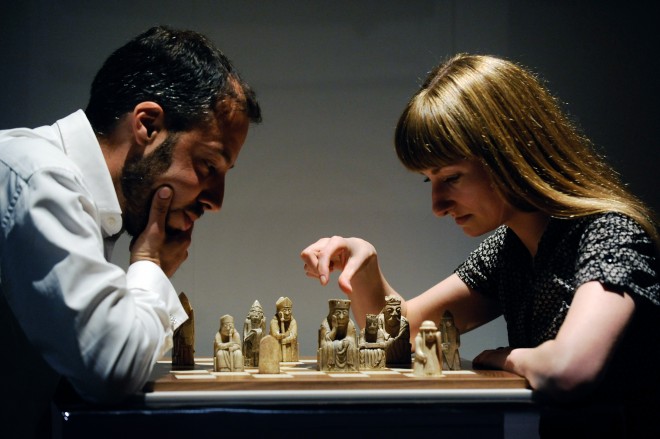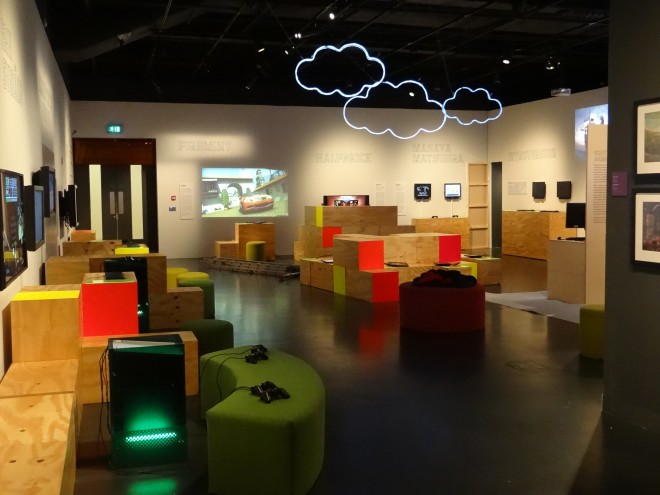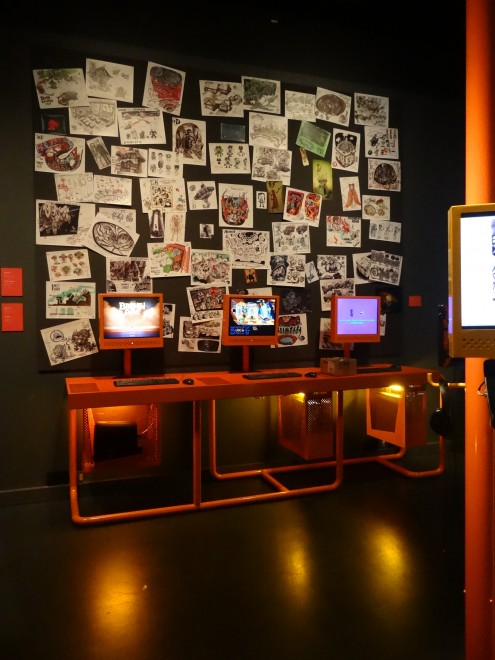Gaming Past, Present & Future: Part 1 by Adrian Maldonado and Part 2 by Adrian Hon
What do arcade games and museum displays have in common? On the face of it, not terribly much: arcade games are made to be handled, while museums are known more for keeping their artefacts out of reach behind glass. The Game Masters exhibition puts an arcade of 100 playable games in the National Museum of Scotland and challenges what we know about both. I have now been visited the exhibition twice and can happily report that it is a match made in heaven.
As an archaeologist, I have devoted myself to ancient artefacts and lost landscapes. I study the Middle Ages, not the Digital Age. But my training has taught me that archaeology is all around us, and the stuff of today is the artefact of tomorrow. Thanks to the increasing pace of technology, things go out of date much faster than they ever have, and we are conditioned to let go of things much sooner. The result is, perhaps, that things become archaeology a lot quicker.

I went into Game Masters to see whether an archaeological perspective would add to my appreciation of the games on display. Entering the corridor of classic arcade cabinets, I felt like a conservator or a curator with permission to study these artefacts up close. I took the time to appreciate the side art and the marquee of every cabinet and how it would have drawn early gamers in. I tried to visualise the people who had played these cabinets before me, in some cases going back over 30 years ago.
But it was through playing that I learned the most, and what I learned was how unfamiliar many of these games felt. Even games I have played hundreds of times like Donkey Kong (1981) were different than I remembered. No matter how many times you’ve jumped Mario (or as he was known then, Jumpman) over a menacing barrel, you need to relearn your timing with an original joystick and pushbuttons.
One thing which genuinely took me aback was the intense white glow of the lasers fired from the spaceships on early games like Asteroids (1979) and Rip-Off (1980), thanks to the vector monitor, a kind of display no longer used and which cannot be faithfully reproduced on modern screens. Despite playing emulated versions of these games, it was like I had never really seen them before.

Another thing I also learned very quickly was how bad I was at any game older than me. Anything with a trackball control I could barely survive long enough to learn how to win. But even games I grew up playing like Sonic the Hedgehog (1991) felt foreign, as it had been so long since I held a Sega Genesis (Mega Drive) gamepad. Playing these games was more than just a nostalgia trip, it was a re-education.
The Game Masters exhibition keeps interpretation to a minimum and just encourages you to dive in yourself. The games are displayed in roughly chronological order, but the overall effect is more than just a story of technological evolution. The games are also clustered by designer or studio, and the interpretation panels focused mainly on legendary designers like Dave Theurer (Missile Command, Tempest) and Tomohiro Nishikado (Space Invaders). It reminds you that these are works of specific artists like any other museum object, and expresses their underappreciated legacy on the way we play today.

But I don’t want to underplay the power of nostalgia here, and how fun it can be to play the past. As a child of the 1980s, I felt like a wise elder as I recognized and remembered playing the various home consoles when they first came out. My wife and I traded stories of the games we each grew up with. A father taught his son how to play Sonic. I was transported back to my childhood when I heard the theme to Xevious (1982, though I had previously only played the NES port, 1988). I was ecstatic to see a strong Sega representation, including the short-lived Sega Dreamcast and games like Space Channel Five (2000).
These personal connections are what made the exhibition so powerful, and the ability to make your own way through means everyone can leave with a different experience. The centrepiece of the exhibition is a theatre-like space with a large screen playing Dance Central 2 (2011), which was always full of people dancing or waiting their turn. Such rhythm games are immensely popular now, but I skipped this one in favour of another. It was in the very end of the exhibit, on a small screen in the last corner by the exit: a game called PaRappa the Rapper (1996) which I hadn’t played for nearly two decades. As an early example of a rhythm game, you could call it the ancestor of Dance Central. That’s a fine academic point to make, but it hit me on a much deeper level: it re-activated wrinkles in my brain from the songs I forgot I remembered word for word. I dragged my wife over and showed her how to play. I danced along as I mashed the buttons, not caring who saw me. It was an unexpectedly cathartic end to my own experience of playing the past.

Far from isolating people in their bedrooms, the exhibition shows how games are a way of bringing people together. Putting these games back into their arcade-like setting reminded me that all these games worked not only because they were fun, but because you could share an intensely personal experience with countless others. It is perhaps the ultimate museum exhibition, where you learn by doing, acting, handling, playing.
Placing early arcade games alongside their console descendants and modern indie games really drives home the fact that videogames are more than just distractions. In a time when games are played by young and old alike, Game Masters makes it clear that these games are our heritage, something that needs to be preserved and cared for like any other archaeological artefact in the museum.
Dr Maldonado is a lecturer in archaeology at the University of Chester. He also writes about pop culture archaeology on the Almost Archaeology blog. You can follow him on Twitter @amaldon.
